West PH Sea, Benham Bank among world’s richest soft coral habitats, new study finds
Philippine waters currently under threat from China were confirmed as part of global biodiversity center for soft corals, with high potential for new species
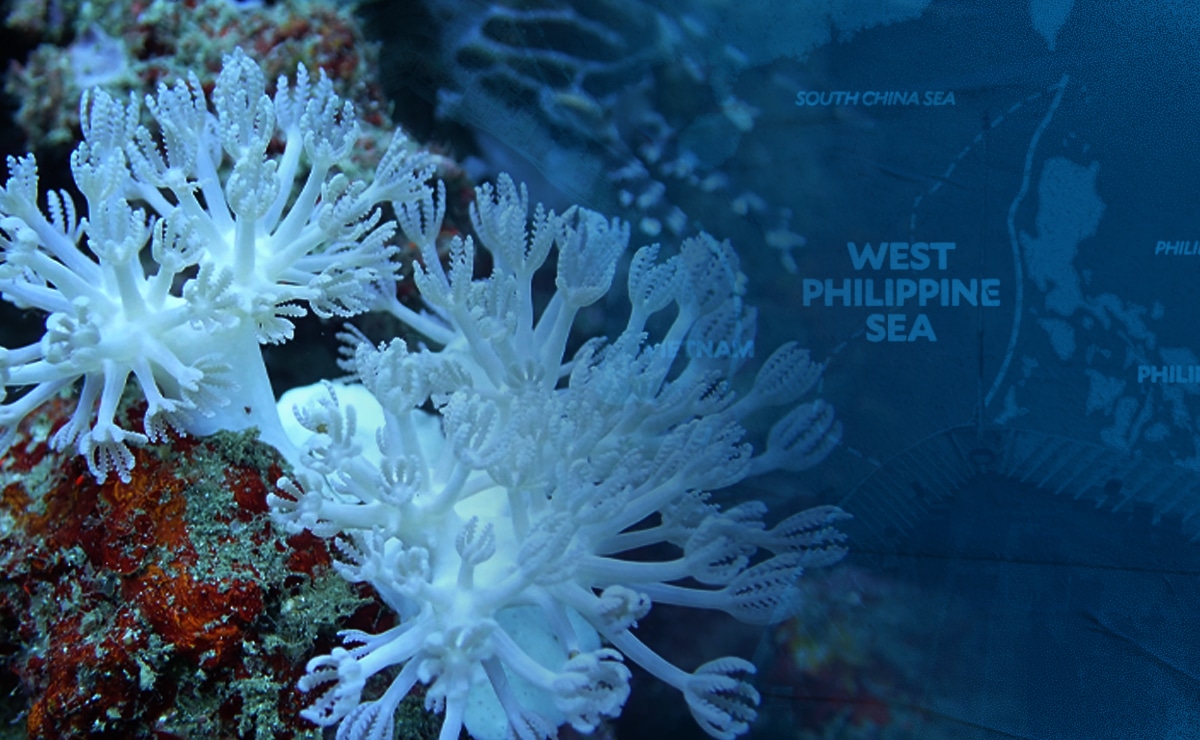
COMPOSITE PHOTO: Pulse coral Xenia sp. in Puerto Galera, Occidental Mindoro from UP MSI/Inquirer file photo
MANILA, Philippines—Soft corals in the West Philippine Sea and Benham Bank in the Philippine Rise, which are under threat from China, are among the richest and most diverse in the world, a newly published international study has found, confirming Philippine waters as a key contributor to one of the globe’s biodiversity centers for these vital reef organisms.
The study, Biodiversity and biogeography of zooxanthellate soft corals across the Indo-Pacific, published this May in Nature Scientific Reports, used DNA barcoding to analyze more than 4,400 samples of soft corals from over 40 countries.
These soft corals—called zooxanthellate because they live in partnership with algae that give them energy—are among the most common organisms in shallow coral reefs. Like hard corals, they help build reef habitats, provide shelter for marine life, and respond to similar environmental stressors.
Yet despite their importance, they remain one of the most understudied groups in marine biodiversity research.
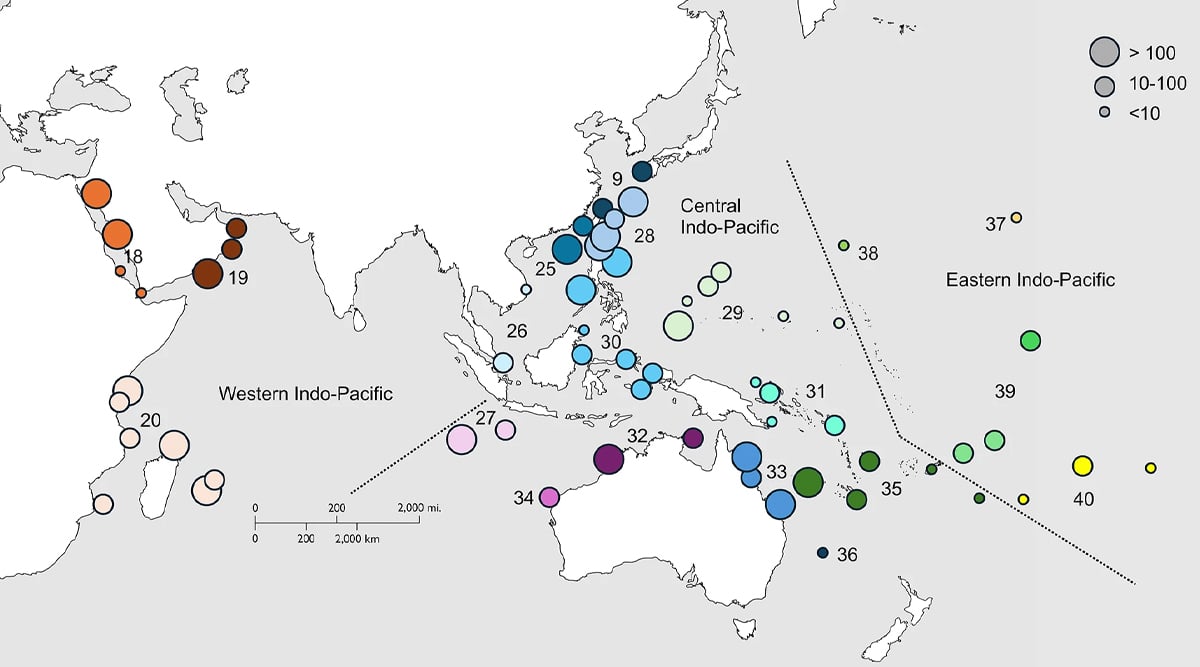
Soft coral samples were collected from across the Indo-Pacific, with circle size showing sample volume and colors indicating marine provinces. Over 100 samples came from the West Philippine Sea and Philippine Rise alone. PHOTO: UP MSI
Among the most significant contributors to this unprecedented effort were researchers from the University of the Philippines Marine Science Institute (UP MSI), who collected all the Philippine samples used in the analysis.
Their work confirmed what local marine biologists had long suspected: that the West Philippine Sea (WPS) and the Benham Bank area host a staggering variety of soft coral species, many likely undiscovered.
“There are just very few papers on soft corals in the Philippines, despite them being obviously dominant components of Philippine coral reefs,” said Dr. Jue Lalas, one of two Filipino co-authors of the study, citing the limited number of researchers working on these soft-bodied animals compared to hard corals.
A hidden trove of soft coral life
The Philippine soft coral samples—collected between 2019 and 2021 from sites including the Kalayaan Island Group, Western Palawan, Pangasinan, Puerto Galera, and Benham Bank—revealed extremely high species richness and endemicity, or uniqueness, in the region.
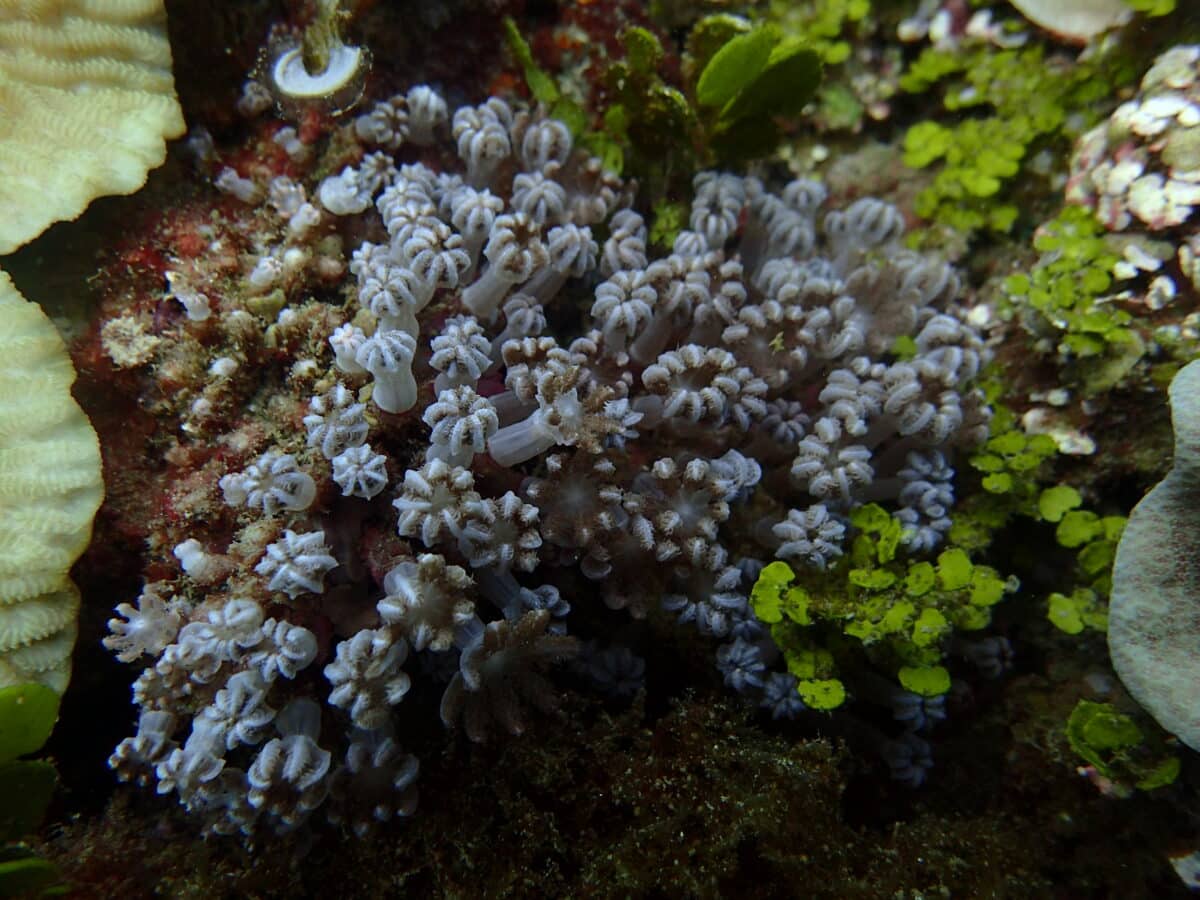
Clavularia sp., (Bolinao, Pangasinan). PHOTO: UP MSI
According to the paper’s findings, only three locations in the entire Indo-Pacific—the Western Indian Ocean, the Western Coral Triangle (which includes the Philippines), and the NE Australian Shelf—stood out as simultaneous centers of species richness and endemism. Remarkably, the WPS and Benham Bank performed at par with these global hotspots in both diversity and the presence of potentially unique species.
“The samples from the Philippines were major representatives for the Coral Triangle region,” explained Dr. Lalas.
“The paper shows that the Philippines, including the West Philippine Sea and Benham Bank in northeastern Philippines, is part of one of the centers of zooxanthellate soft coral diversity,” he added.
Global discovery, local groundwork
Most Philippine specimens were collected by Dr. Lalas while serving as a research associate at UP MSI, assisted by Rhea Luciano and Christine Segumalian of the IMBiBE (Interactions of Marine Bionts and Benthic Ecosystems) Laboratory, under the leadership of Dr. Maria Vanessa Baria-Rodriguez, the study’s second Filipino co-author.
Dr. Baria-Rodriguez has been leading efforts to close the research gap on soft coral diversity in the Philippines. In 2019, members of her IMBiBE lab at UP MSI received training from Dr. Yehuda Benayahu, one of the world’s foremost experts on soft coral taxonomy. Since then, the lab has published studies that expanded knowledge on the distribution and ecology of soft corals in parts of the country.
In 2023, the team organized another training on soft coral taxonomy and basic identification, this time bringing together participants from UP MSI and partner local universities.
For Dr. Lalas, Dr. Baria-Rodriguez, and the UP MSI team, advancing soft coral research in the country is key to uncovering the true diversity and ecological richness of Philippine waters.
Coral Triangle, but more than just a triangle
While soft corals don’t form the rigid skeletons that build reef structures, they play important ecological roles by adding complexity to reef habitats and providing shelter for marine life. Some species also produce compounds with medicinal potential, and their striking forms make them valuable attractions in popular diving sites.
Yet, for decades, their biodiversity patterns remained poorly understood, especially outside the iconic Coral Triangle.
Lead author Dr. Catherine McFadden and collaborators used DNA sequencing to group specimens into molecular operational taxonomic units (MOTUs), or proxies for species. Their results revealed two distinct global centers of soft coral diversity: one in the well-known Indo-Australian Archipelago (the Coral Triangle), and another in the Western Indian Ocean—a finding that challenges conventional marine biodiversity maps.
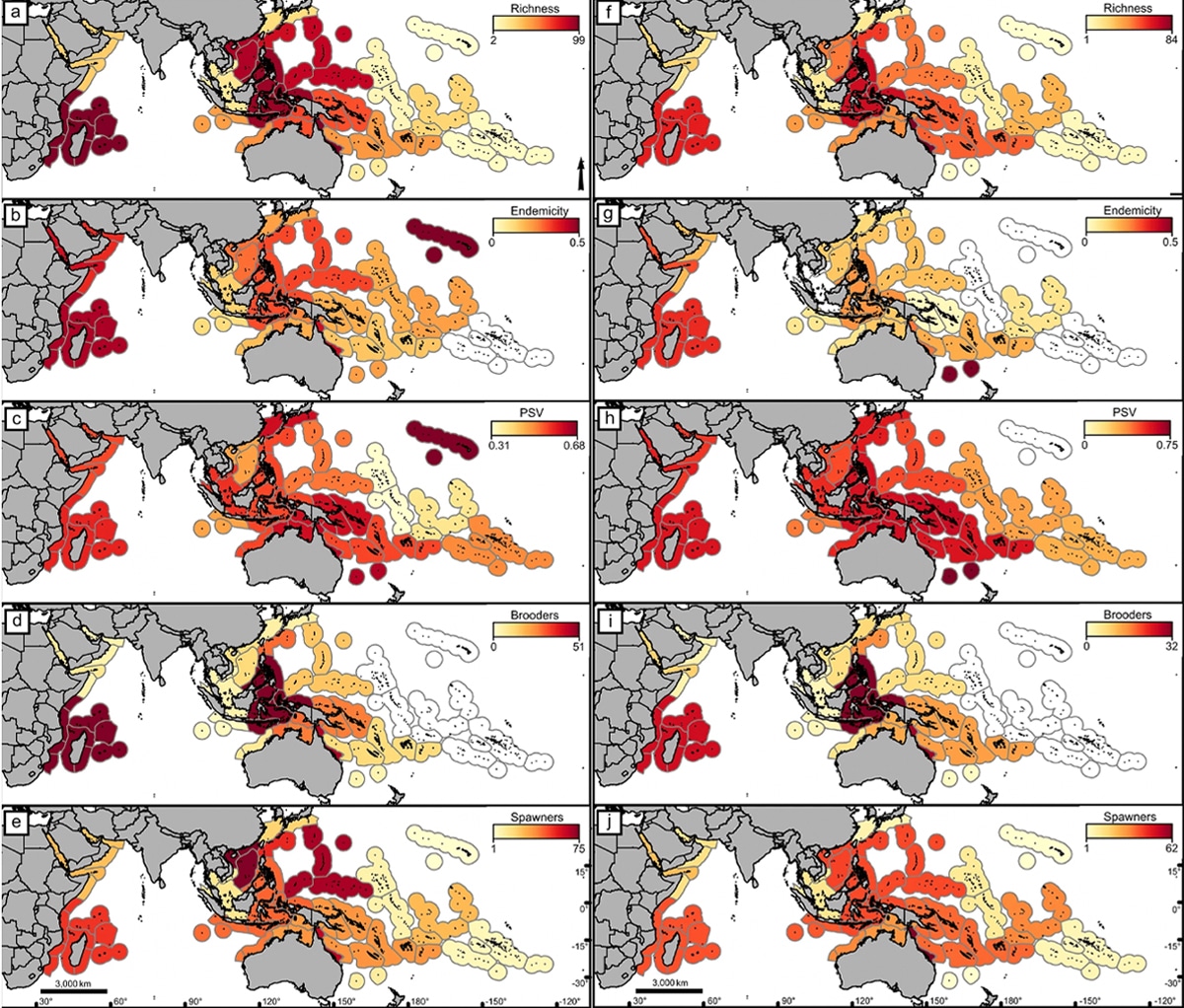
Philippine soft coral specimens were collected between 2019 and 2021 from various sites, including the Kalayaan Island Group, Palawan, Pangasinan, Puerto Galera, and Benham Bank. The data confirm high biodiversity and possible undiscovered species across these regions. PHOTO: UP MSI
But the Philippine samples proved especially revealing.
“We have undoubtedly underestimated numbers of species for these taxa,” the study authors acknowledged.
Limited sample coverage in parts of the Philippines, combined with the slow-evolving genes used in barcoding, suggests that many soft coral species in the region may remain undocumented.
“If you look at the study more closely, and the literature on Philippine soft corals, we have yet to explore their diversity in most of the Philippine seas. This represents an opportunity for coral reef scientists in different parts of the country,” said Dr. Lalas.
Resilience and risk: Soft corals in a changing sea
Soft corals may also play a crucial role in reef resilience amid climate change. Some studies, including work by Filipino researchers, have observed shifts toward soft coral dominance in degraded or disturbed reefs.
“In some disturbed sites in the Indo-Pacific, some studies have reported a shift to the dominance of soft corals. They have been generally reported to have high resilience to disturbances. However, soft corals may also eventually be subjected to mortality if stressors persist,” said Dr. Lalas.
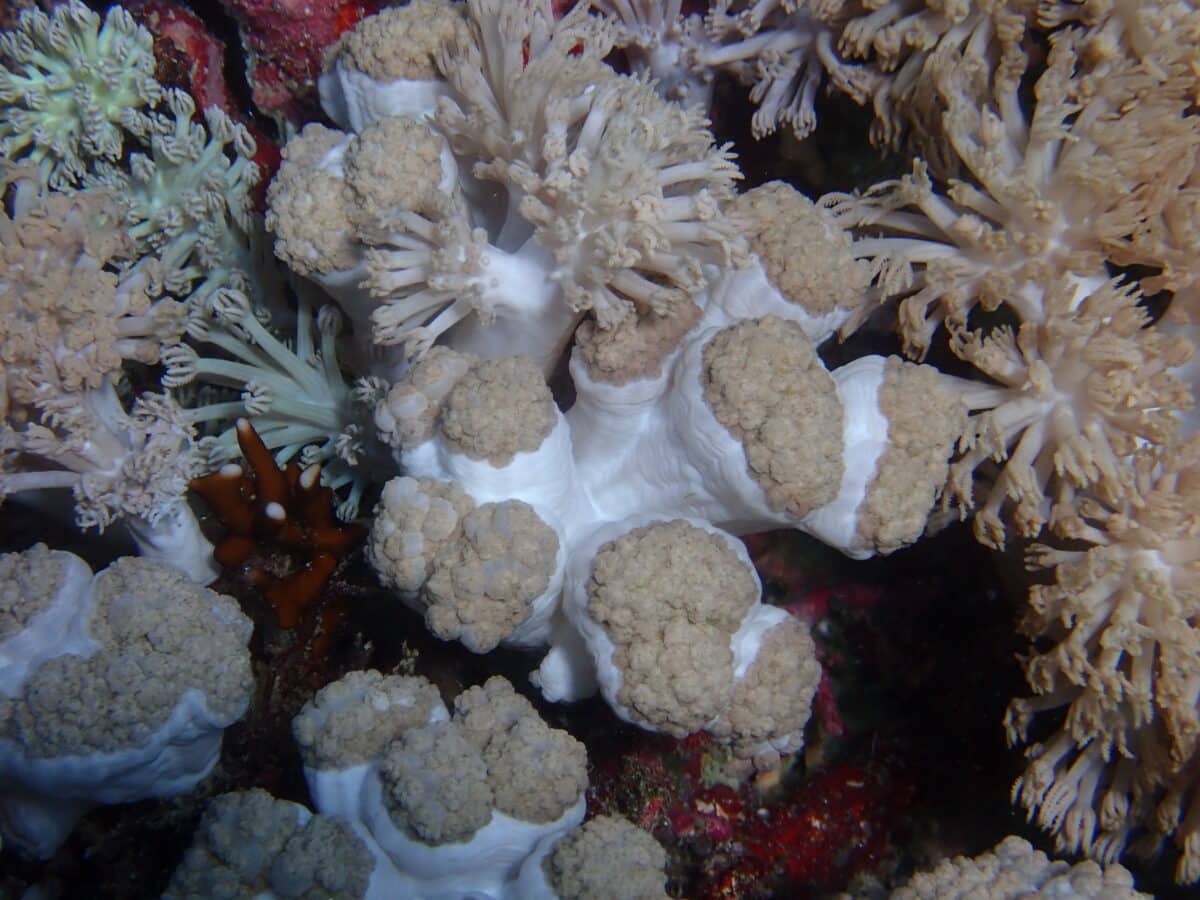
Xeniid soft coral (from family Xeniidae), Puerto Galera, Oriental Mindoro. PHOTO: UP MSI
“Overall, soft corals can serve as useful indicators of environmental disturbances,” he added. “Ongoing research continues to shed light on their ecological roles in coral reefs amid global and local changes.”
Why does the study matter to PH?
Beyond its scientific contributions, the paper places the Philippines squarely in the spotlight of marine conservation.
With Philippine waters already home to one of the country’s largest offshore marine protected areas—the Philippine Rise Marine Resource Reserve—these findings add urgency to ongoing calls to protect WPS and Benham Bank from ecological threats such as deep-sea mining, illegal fishing, and climate change.
READ: ‘Irreparable harm’: China intrusion’s impact on West Philippine Sea ecosystem
READ: PH ocean health: From bad to worse amid China invasion of WPS

Dendronephthya sp. (Puerto Galera, Oriental Mindoro). PHOTO: UP MSI
For Dr. Lalas, the study marks a significant milestone in strengthening collaboration between Filipino soft coral researchers and international experts.
He emphasized that the findings also underscore the role of the Philippines, particularly areas like Benham Bank and the West Philippine Sea, as critical centers of marine biodiversity that deserve stronger protection.
RELATED STORIES:
Artificial habitats: Not enough to save PH coral system
For comprehensive coverage, in-depth analysis, visit our special page for West Philippine Sea updates. Stay informed with articles, videos, and expert opinions.


















